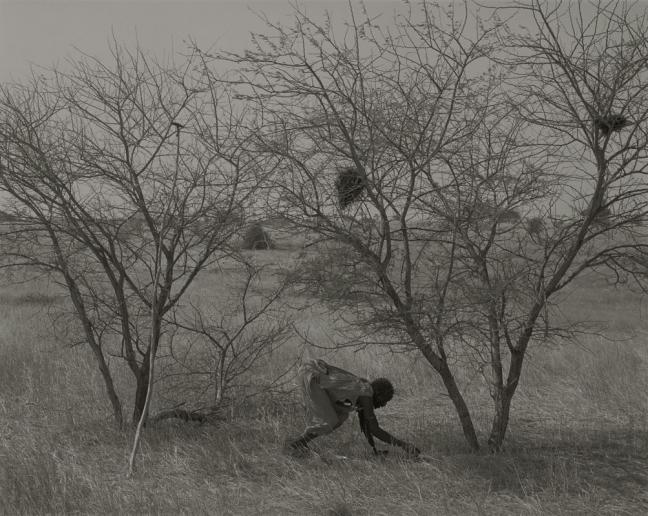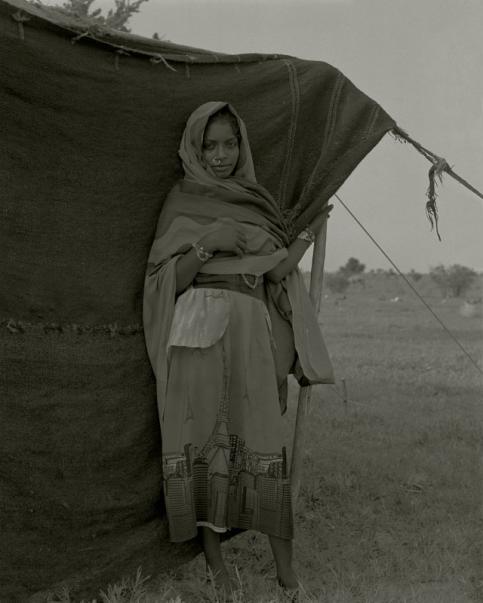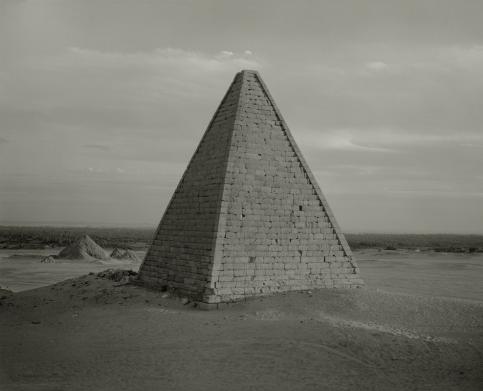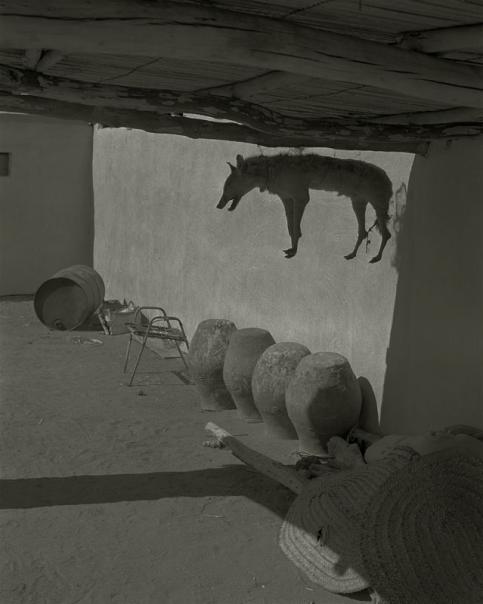Claude Iverné has an uncommon way of working as a photographer. He refuses to be seen, despite the fact that it is now considered the norm for reportage to be in the first person. This is why this remains a resolutely “purist” vision of documentary photography, with no room for egocentrism. Reality is dark so the photographer remains in the dark.
By making the processes of “ethnographic” photography his own, Claude Iverné also adopted its principles. For him, the role given to the photographer-reporter is not enough, nor is the role of simple spokesperson for “suffering” populations. He takes on their codes and their logic. He is in no way looking for a “natural state”. We would be mistaken to think of him hunting for the “truth” of a people, on the contrary, his approach is a series of mysteries.
The reasoning that produces this photography is far from explanatory. We get close to things, through their most concrete aspect. The spirit of the series brings us face to face with the matrices and their versions. His result becomes ours: a question without answers.
Our era marks a certain defiance toward reportage photography. Is there an alternative to images whose origins are only rarely certified? Faced with the “uselessness”, or more to the point, the ineffectiveness of photography as a witness, is a regeneration of the language of documentary possible? It would appear that by inverting the order of time, by shifting away from the urgency, we can approach new territories for understanding the world.
While there is a tradition that ensures the pre-eminence of black and white photography over other modern media, it is without contest due to the virtue of silence. The fixed, monochrome image retains the quality of economy unlike the permanent flow of information, whatever its nature. Restraint, that should be the rule everywhere, is, at the very least, the murmur of reality in the situations presented by Claude Iverné…
By banishing seduction and emotion while founding an aesthetic, the photographer includes in the latter the critical possibility of the visible and its perception. The expectations of the viewer, the pre-vision of a humanitarian image being our era’s “exoticism”, are up against the only possible way to read the real, its transfiguration. The question of the restitution of the real does not necessarily require the requisition of impressions. Without logos, the operator has an effective tool at his or her disposal, a desire for distancing.
The will to “faithfully” reproduce the world is paired with a certain resolution to go beyond current affairs and with a brusque disregard for emotion. The observation of Sudanese society according to a strict procedure, amplifies the impression of a gap between the treatment of the subject and its urgency. The images do not appear as “unicas”, singular objects, but appear to us as simple elements of a complex game. Photography is a “Krieg spiel”.
Exteriority validates the commentary. The blindness of the photographer is as that of Tiresias. Faced with disaster, the operator resists by mastering the technology. The submission of the camera is the beginning of renunciation. Otherness begins where the technical aspect is subjected. Claude Iverné speaks Arab. This perhaps leads to an appreciation for the real that owes nothing to the fake poetry of travel. What is missing from these series is romanticism, they are in no way symbolic or disenchanted, nor are they crippled by Rimbaud syndrome. The practice of photography, like learning a language, is a permanent initiation to difficulty, better even, to impossibility.
Ever since we’ve known that things are bad in Africa, the continent has been left without the promise of a future. It is what it is. This is what Claude Iverné has to say. Unlike a “traditional” photographer, imbued with moral consideration, he does not raise the document to the level of testimony. And, amused by the messianic role that he has been assigned, he only sees his different interventions through a disassociation from traditional reportage. He sets up the idea that this journey reveals nothing by itself. It is a decoy, obviously, but not the most deceiving, here and now.
The images imbued with a strange tone into which the series meld, do not provoke fantasy and even less the desire to leave. The narrative focuses on the biotope’s fault lines and contradictions. The point of this work is to break with the different models of photographic narrative. Obviously, we don’t find a modernisation of the myth (at the source of the Nile!) any more than we find personal serenity. Darfur is similar in many aspects to the banality of other regions.
The lack of differentiation in the material does not lead the photographer into the abstract. The image arranges the nuance. If it refutes contrast, meaning the simplistic organisation of a split between good and evil, it is to all the better to undo the drama. The description of reality records only unqualifiable moments as they are universal. “
The way in which men
produce their means of subsistence depends first of all on the nature of the actual
means
of subsistence they find in existence and have to rep
roduce. This mode of production
must not be considered simply as being the production o
f the physical existence of the
individuals. Rather it is a definite form of activity of these individuals, a definite form of expressing their life, a definite mode of life on their part. As individuals express their life, so they are. What they are, therefore, coincides with their production, both with
what they
produce and with how they produce. The nature of individuals thus depends on the material conditions determining their production
.”
Karl Marx. F. Engels. 1845. The German Ideology.
The wish to confront the world through photography, a relationship mediated by a camera, only makes sense if the relationship is shared. Here it takes on different forms, from a published document to a photo hanging on a wall. What is important in the restitution is the situation. Whatever this means for the photographer, if the shot forms the raw material, the clue that is necessary for all ulterior commentary, then the commentary is based on the initial intention. The final event is at the heart of the photographic journey.
François Cheval




